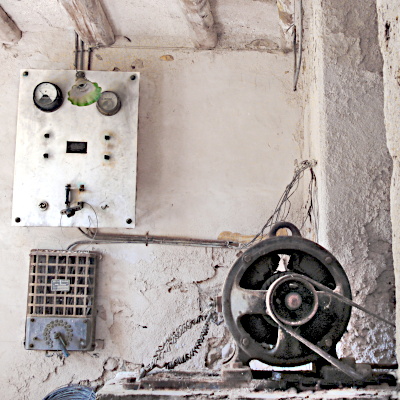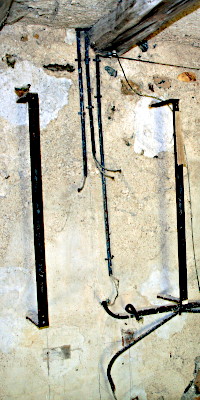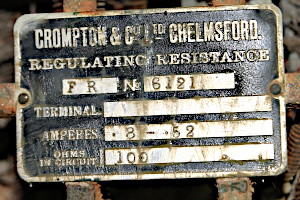
Espés bajo

Pictures: 16.viii.2007, 29.vii.2020


Pictures: 16.viii.2007, 29.vii.2020
| waterworks | harinero | central eléctrica |






At the time of our first visit, a simple control panel (6) was still mounted against the wall. It was gone when we were there a second time (5). There was a switch at the bottom. It further featured a voltmeter (top left), an ampère meter, and two fuses (8) to secure the circuit.
A small plate is attached between the fuses (8). It was completely rusted, but we were still able to decipher the name . The leg of the R is stretched into an energetic swirl that emphasizes the final letters.




Crompton & C° was founded in 1878 by and quickly became the largest distributor and manufacturer of electricity generators and lighting systems in its country. The company was also in great demand elsewhere in Europe due to its good reputation.
Crompton was not afraid to try new things. In 1893, the Scottish inventor came to Crompton with the prototype of an electric toaster, which he improved and marketed under the name Eclipse. It was the forerunner of today's almost ubiquitous appliances. The appliance was a little ahead of its time, because who had electricity in their home at the end of the 19th century?
Later, Crompton, like , whom we saw in the oil mill of Banastón, ventured into experiments with a battery-powered omnibus. In November 1911, the company proposed a British double-decker powered by two battery-powered motors. It never came to anything.
| waterworks | harinero | central eléctrica |